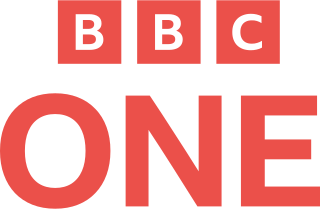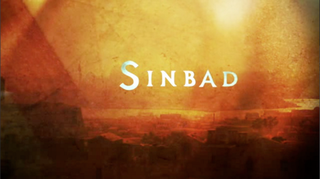Related Research Articles

S4C is a Welsh language free-to-air public broadcast television channel. Launched on 1 November 1982, it was the first television channel to be aimed specifically at a Welsh-speaking audience. S4C's headquarters are based in Carmarthen, at the University of Wales Trinity Saint David's creative and digital centre, Yr Egin. It also has regional offices in Caernarfon and Cardiff. As of 2024, S4C had an average of 118 employees. S4C is the fourth-oldest terrestrial television channel in Wales after BBC One, ITV and BBC Two.
Television broadcasts in the United Kingdom began in 1932, however, regular broadcasts would only begin four years later. Television began as a public service which was free of advertising, which followed the first demonstration of a transmitted moving image in 1926. Currently, the United Kingdom has a collection of free-to-air, free-to-view and subscription services over a variety of distribution media, through which there are over 480 channels for consumers as well as on-demand content. There are six main channel owners who are responsible for most material viewed.

BBC One is a British free-to-air public broadcast television channel owned and operated by the BBC. It is the corporation's oldest and flagship channel, and is known for broadcasting mainstream programming, which includes BBC News television bulletins, primetime drama and entertainment, and live BBC Sport events.
Barb Audiences Ltd is a British organisation that compiles audience measurement and television ratings in the United Kingdom. It was created in 1981 to replace two previous systems whereby ITV ratings were compiled by JICTAR, whilst the BBC did their own audience research.

New Tricks is a British television police procedural comedy drama, created by Nigel McCrery and Roy Mitchell, produced primarily by Wall to Wall, and broadcast on BBC One. The programme originally began with a pilot episode on 27 March 2003, before a full series was commissioned for 1 April 2004; New Tricks concluded after twelve series on 6 October 2015. The show had an ensemble cast, of which Dennis Waterman was the only constant over all twelve series; the cast variously included Alun Armstrong, James Bolam, Amanda Redman, Denis Lawson, Nicholas Lyndhurst, Tamzin Outhwaite, and Larry Lamb.
Audience measurement calculates how many people are in an audience, usually in relation to radio listenership and television viewership, but also in relation to newspaper and magazine readership and, increasingly, web traffic. The term is sometimes used with regard to practices that help broadcasters and advertisers determine who is listening, rather than how many people are listening. In some parts of the world, the resulting numbers are referred to as audience share; in other places, the broader term market share is used. This broader meaning is also known as audience research. Measurements are broken down by media market, which corresponds to large and small metropolitan areas.
Television ratings in Australia are used to determine the size and composition of audiences across Australian broadcast and subscription television, primarily for the purpose of informing advertisers what programming is popular with the audience they are attempting to sell their product or service to.

Planet Earth is a 2006 British television series produced by the BBC Natural History Unit. Five years in the making, it was the most expensive nature documentary series ever commissioned by the BBC and also the first to be filmed in high definition. The series received multiple awards, including four Emmy Awards, a Peabody Award, and an award from the Royal Television Society.
In advertising and media analysis, reach refers to the total number of different people or households exposed, at least once, to a medium during a given period. Reach should not be confused with the number of people who will actually be exposed to and consume the advertising, though. It is just the number of people who are exposed to the medium and therefore have an opportunity to see or hear the ad or commercial. Reach may be stated either as an absolute number, or as a fraction of a given population.
A target rating point is a metric used in marketing and advertising to compare target audience impressions of a campaign or advertisement through a communication medium relative to the target audience population size. In the particular case of television, a device is attached to the TV set in a few thousand viewers' houses to measure impressions. These numbers are treated as a sample from the overall TV owners in different geographical and demographic sectors. Using a device, a special code is telecasted during the programme, which records the time and the programme that a viewer watches on a particular day. The average is taken for a 30-day period, which gives the viewership status for the particular channel. This has an average limit between 0-3.0.

Would I Lie to You? is a British comedy panel show aired on BBC One, made by Zeppotron for the BBC. It was first broadcast on 16 June 2007, starring David Mitchell and Lee Mack as team captains. The show was originally presented by Angus Deayton, and since 2009 has been hosted by Rob Brydon.
Médiamétrie, established in 1985, is a public limited company specialising in audience measurement and research into audio-visual and digital media usage in France. It is especially well known for its Audimat brand whose name is now part of everyday language; today, however, that brand is named Médiamat.
Nielsen Media Research (NMR) is an American firm that measures media audiences, including television, radio, theatre, films, and newspapers. Headquartered in New York City, it is best known for the Nielsen ratings, an audience measurement system of television viewership that for years has been the deciding factor in canceling or renewing television shows by television networks. As of August 2024, it is the primary part of Nielsen Holdings.
Channel 5 is a British free-to-air public broadcast television channel owned and operated by Channel 5 Broadcasting Limited, a wholly-owned subsidiary of Paramount Global's UK and Australia division. It was launched in 1997 to provide a fifth national terrestrial channel in the United Kingdom.

Sinbad is an action-adventure fantasy family saga television series that aired on Sky1 from 8 July to 23 September 2012. It was produced by Impossible Pictures, the same company who made Walking with Dinosaurs and Primeval. The series stars Elliot Knight as the eponymous hero Sinbad.

The Broadcast Audience Research Council (BARC) India is a joint industry body founded by organisations that represent Indian broadcasters (IBDF), advertisers (ISA), and advertising and media agencies (AAAI). It is the world's largest television measurement science industry body.
References
- ↑ "Television Appreciation Survey Website". GfK. Archived from the original on 24 September 2020.
- ↑ "Measuring and monitoring public value–the BBC approach]".
- 1 2 3 Matthewman, Scott (19 January 2010). "Between a rating and a hard place". The Stage . London. Archived from the original on 25 May 2010. Retrieved 10 May 2010.
- 1 2 3 4 5 McLean, Gareth (1 June 2009). "How do I rate thee? Let me count the ways". The Guardian . London. Archived from the original on 22 January 2016.
- 1 2 "Inside the BBC – Audience Information". BBC. Archived from the original on 26 April 2013.
- ↑ "Inside the BBC – Audience Information – April–June 2013". BBC. Archived from the original on 22 August 2014.
- ↑ "BBC Annual Report 2008/2009" (PDF). BBC. Archived from the original (PDF) on 30 October 2012. Retrieved 10 May 2010.
- ↑ Matthewman, Scott (19 January 2010). "Between a rating and a hard place". The Stage . London. Archived from the original on 25 May 2010. Retrieved 10 May 2010.
- 1 2 Andy Beckett (20 November 2001). "Numbers game". The Guardian . London. Archived from the original on 10 May 2014. Retrieved 9 January 2008.
- ↑ "ITC Notes". Ofcom. Archived from the original on 13 February 2008. Retrieved 8 January 2008.
- 1 2 3 "BBC Audience Information January – March 2011" (PDF). BBC . Retrieved 3 October 2011.